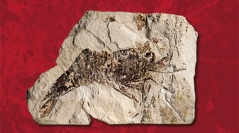

 Geodiversitas
43 (8) - Pages 209-218
Geodiversitas
43 (8) - Pages 209-218Dendrobranchiate shrimps are abundant in Fossil-Lagerstätten (where fossils are exceptionally preserved). Despite their preservation, classifying them can be challenging as most diagnostic characters are based upon extant species. Penaeus natator Glaessner, 1945 (Late Cretaceous, Lebanon, Sahel Alma), is one of those cases in which the systematic assignment of the species can be difficult. It was assigned by “default” to Penaeus Fabricius, 1798, before being moved to Metapenaeopsis Bouvier, 1905. The recent description of Pseudodrobna kenngotti Winkler, 2017 (Late Jurassic, Germany, Schernfeld, a Solnhofen-type Fossil-Lagerstätte) shows that Penaeus natator should be assigned to Pseudodrobna Winkler, 2017. This attests once again the similarity in composition of crustacean faunas between Late Jurassic Solnhofen-type Fossil-Lagerstätten and the Late Cretaceous Fossil-Lagerstätten of Lebanon. We also discuss the palaeoecological significance of bilobed eyes, which occur in three species from the Late Cretaceous of Sahel Alma: Pseudodrobna natator n. comb., Palaeobenthonectes arambourgi (Roger, 1946) and Palaeobenthesicymus libanensis (Brocchi, 1875). These eyes seem to have evolved convergently due to the deep-water and dim-light palaeoenvironment of these three shrimp species.
Decapoda, Dendrobranchiata, Fossil-Lagerstätten, Tithonian, Santonian, palaeobiology, bilobed eyes, new combination